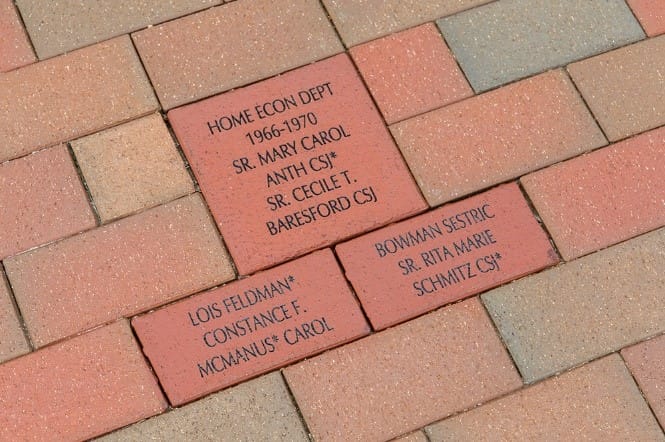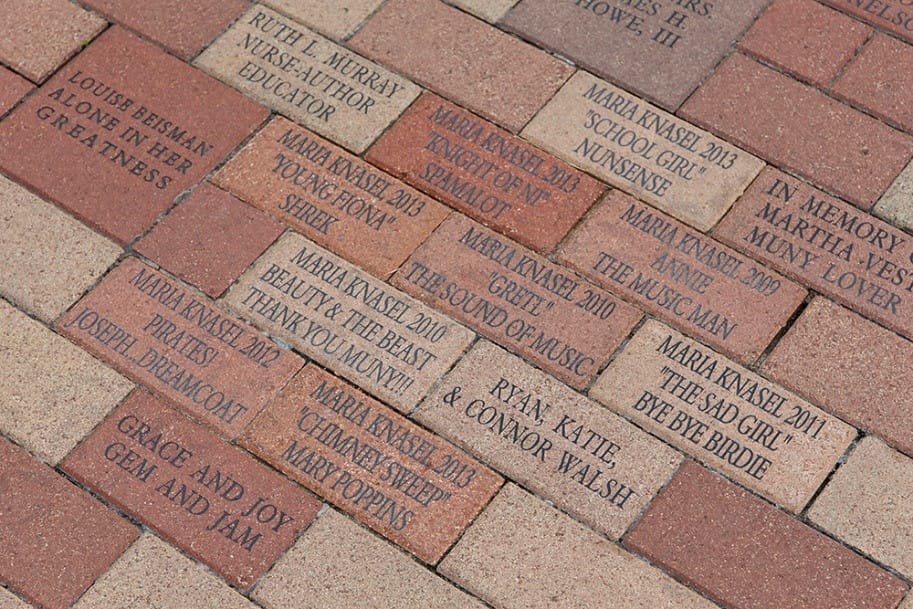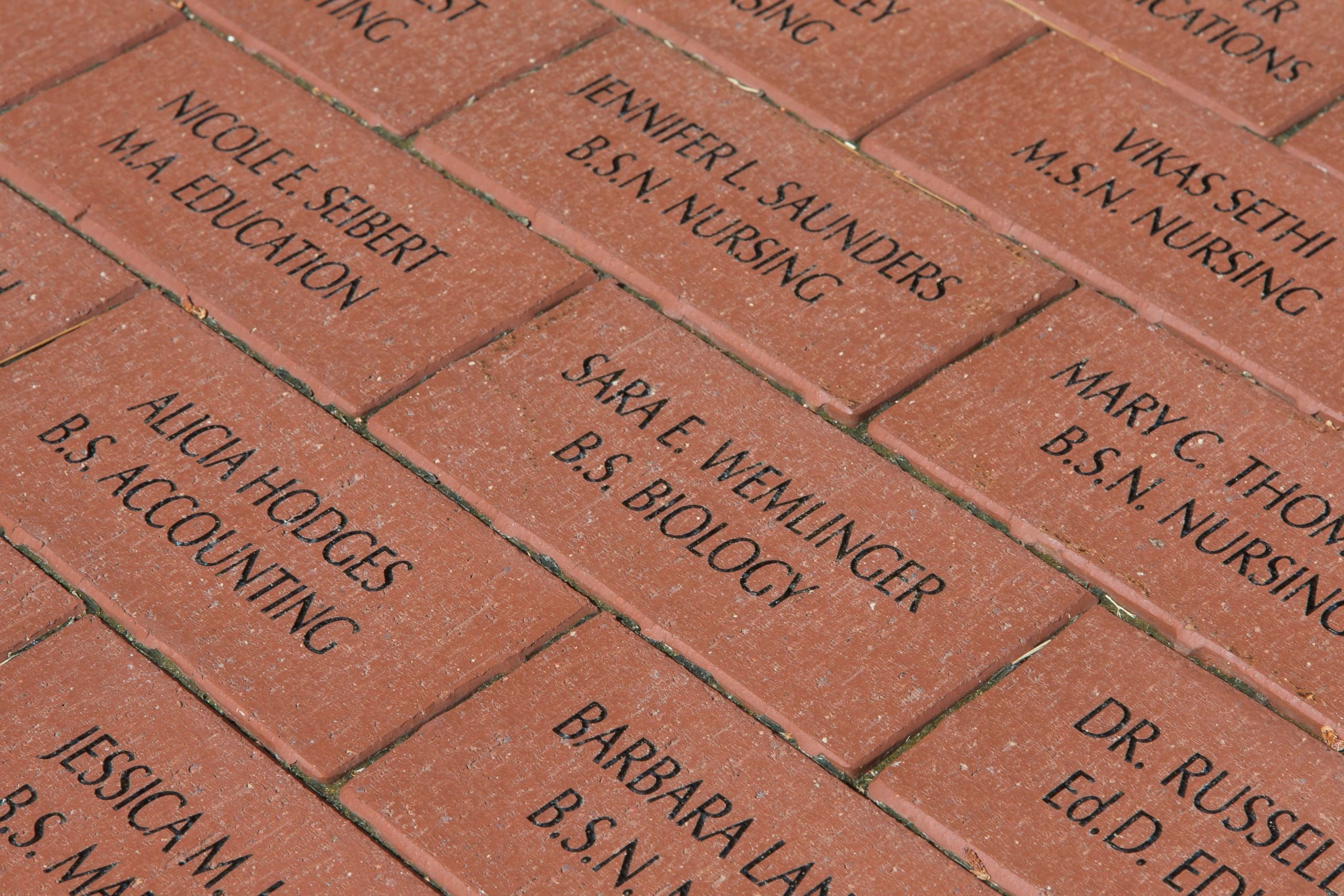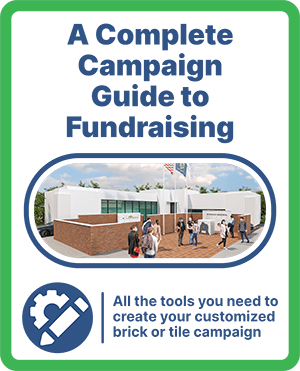Which is better for brick etching, sandblasting or laser engraving? Take a closer look at the history and process of sandblasting, then see for yourself how sandblasting compares with laser engraving. Both processes involve the use of a brick engraving machine, but as you’ll see, the difference in quality is dramatic!
Sandblasting was first patented in the late 1900s and has been used in many industries ever since. In this multi-step process, a stencil is created and applied to the brick. High-powered air and sand are pushed through a machine to “blast” away unmasked portions of brick material. This creates a deep crevice that is later filled with a contrasting monument grade lithochrome paint to make the mark stand out against the brick’s surface.
Sandblasting does face some limitations when it comes to detailed images or fine lines.
Laser Engraving After Ten Years:



Bricks etched by laser are extremely durable. By using our unique laser engraving technologies, we skillfully guide brick engraving machines through a process called Laser Vitrification. During this Vitrification, the laser directs an intensely hot beam onto the brick’s surface. This changes the composition of the clay into a dark, glass-like mark that stands out on the engraved brick or etched tile. So when customers explore all our creative options for adding clipart, artwork, custom graphics, logos, signatures, depictions and fonts to their custom engraved brick or tile, they can do so with confidence, knowing that their choices will endure.
Choosing a brick engraving company can be overwhelming with options, choose a company that has combined 55 years of laser and sandblast engraving experience, making them the true experts in the business. Contact us today at 1-855-BRICKS4U to speak to a member of our team. Let’s get started on a project that is sure to last.
Not every company is as obsessed with quality as we are, however. On the pro side, such bricks can be turned out cheaply and quickly. On the con side, the difference in quality is significant.
Laser Engraving – The Power of Light
To better understand engraving or etching pros and cons, let’s look at the science. Sandblasting is just what it sounds like—a jet of sand is “blasted” against the surface of the brick by means of compressed air or steam. If that sounds a bit like erosion, you’re right—it’s essentially a controlled, amped-up form of erosion used to remove targeted areas of the brick. Sandblasting can work on any masonry material including cement, limestone or pavers with concrete sediment. It also doesn’t rely on dark colors of brick to achieve a superior result. Although sandblasting creates a deep engraving that is beautiful, it cannot achieve as detailed of images as laser engraving because of its dependency on sand and air pressure against a rubber stencil or masks. Character, font and line limitations are a bit more strict with sandblasting for this reason as well.
Lasers use the power of light to achieve precise, artistic, and lasting effects. With pinpoint accuracy, the laser beam transforms the engraved areas of the brick into ceramic in a process known as laser vitrification. Laser brick engraving ensures that the inscription and detailed images permanently cohere with the surrounding brick material.
In other words, the markings don’t merely stick to the brick—they become part of it. No added paint, ink, or epoxy fillers are needed to achieve contrast. Detailed and images or logos can be achieved with laser engraving, as can scripted fonts and extra character counts.
Our dedicated team is happy to decide which process is best for you and complete the project with support and attention to detail, every step of the way!
The Marks of True Quality Endure
Find out even more about the superiority of our product. At Fundraising Brick, we work with an impressive array of fonts, logos, artwork, custom graphics, clip art, and visuals. Don’t let your desired message and images disappear with the sands of time. Call or contact us online and let’s create something beautiful that you can be proud of for decades to come.




